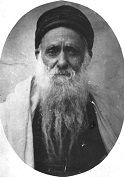A Short Tribute
Hacham Yitzhak Bokhobza was born to Esther and Gabriel Kamos during the month of Adar, 5690 (1853) in Gabès, Tunisia.
He began his Torah studies with Hacham Abraham Alusha in Gabès and continued at Hacham Abraham Hajaj’s yeshiva in the city of Tunis. His parents’ sound financial situation allowed him to study Torah unperturbedly from childhood.
Hacham Yitzhak married, but his wife and the daughter born to them died. He married Tibara, his first wife’s sister, and the couple had a daughter they named Esther and five sons: Yoseph, Moshe, Kamos, Yehuda and Menachem.
By the age of 21, Hacham Yitzhak Bokhobza had already published three books. He earned a living from commerce for a period of time, but following a bankruptcy devoted his entire time to Torah study. He continued to write and publish, while also serving as a teacher, shochet and bodeq, preacher and cantor in Gabès.
In 1905 he began to officiate as dayan in the city of Moknine.
In 1911, he visited in the Land of Israel.
In 1921, he went on to officiate as rabbi in Gabès, and in 1926 the Tripoli community chose him as their chief rabbi. Libya was under Italian rule at the time and, in 1929, the King of Italy visited in Libya. Hacham Yitzhak Bokhobza was one of those who organized the Italian king’s welcome in Tripoli; he led the community in a prayer for the king’s wellbeing. He traveled to Rome, Italy and tradition has it that he viewed the Temple vessels in the Vatican.
Hacham Yitzhak Bokhobza served in the Tripoli rabbinate until his death in 1930. He was buried in Tripoli.
Hacham Yitzhak Bokhobza wrote many books. A partial list includes: Lev Yamim - on the Talmud’s rules, Ginzei Beracha - on the Book of Zohar, Lev HaMelech - on the Book of Esther, Tovat Tochechat - on the Book of Proverbs, Brit Yitzhak - on Tractate Makot, Karban Avi Lechem - on the Torah, Mivtzar Yitzhak - on the Talmud, Lechem Lephi Taph, and commentaries on the Psalms - Bracha U’Tehila and Chai Yodeka, His Responsa were collated in a book entitled Beit HaLachmi.
